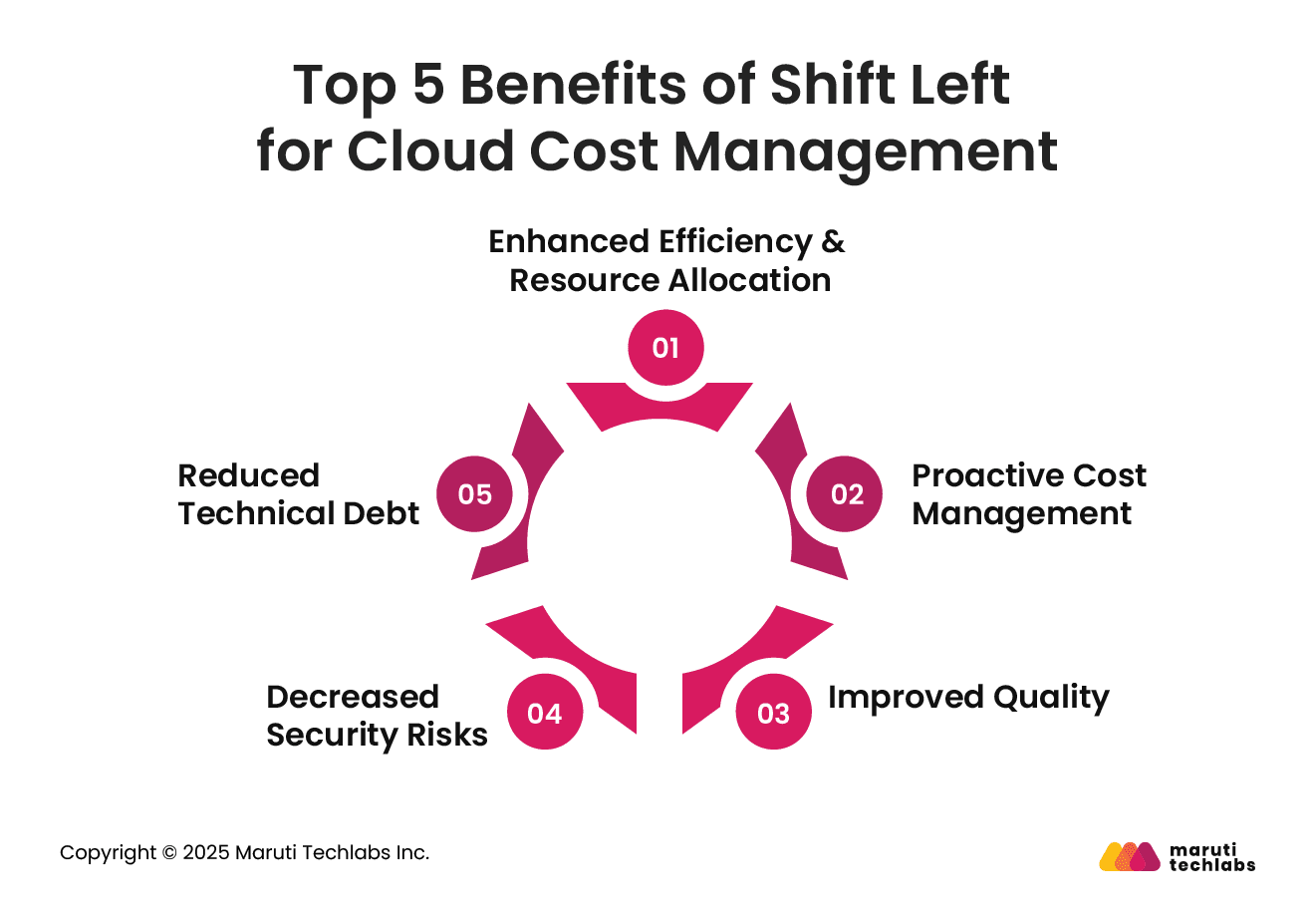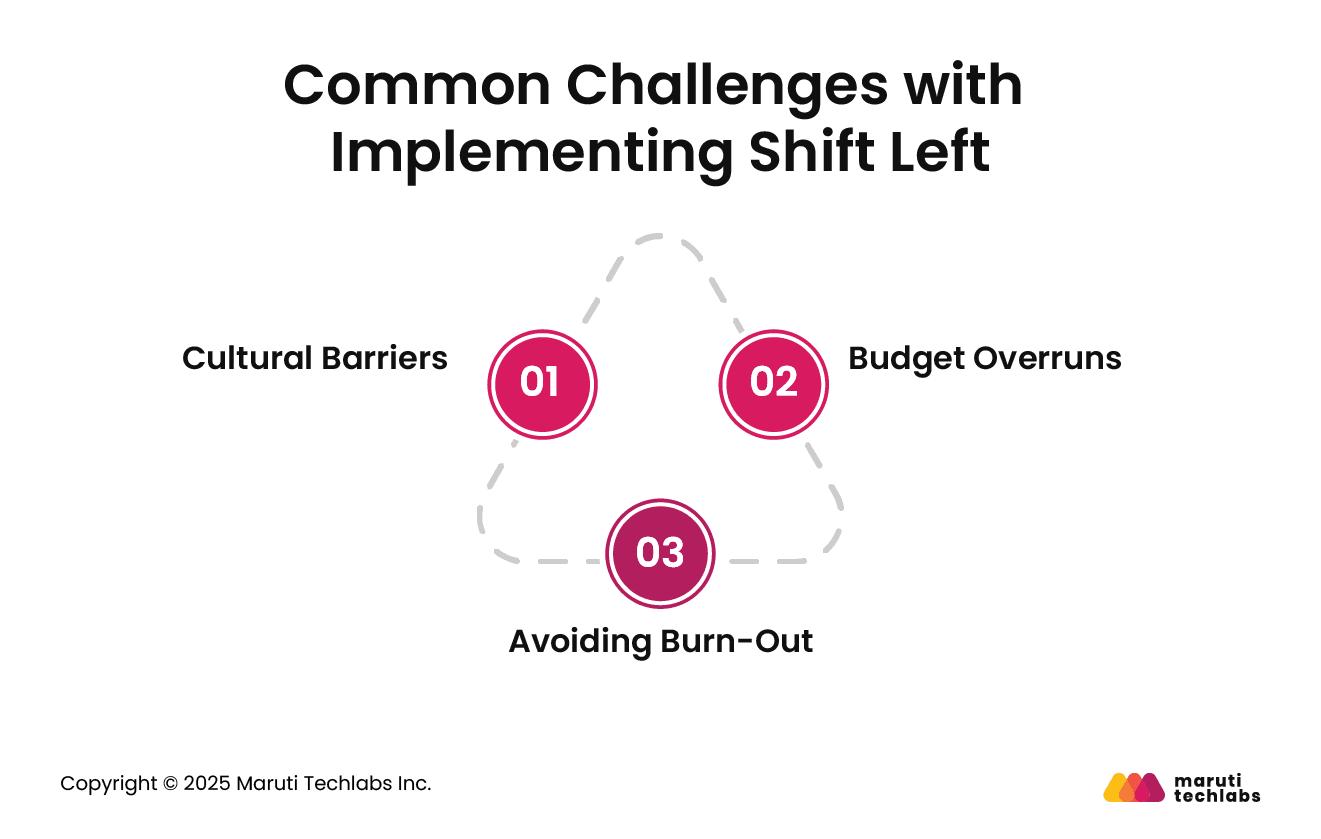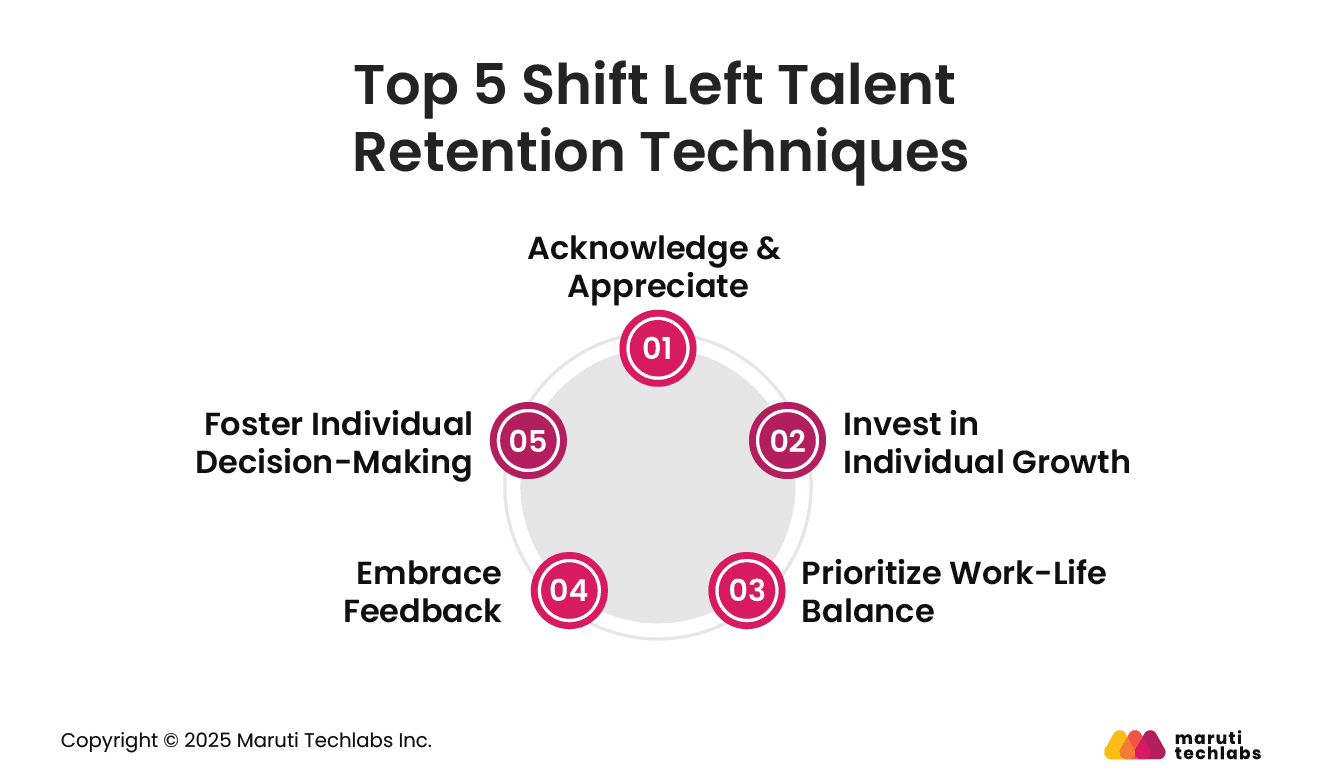

Unlock Cloud Savings: How Shift Left Can Reduce Cloud Costs?






As per a report from Firefly, 65% of respondents agreed that cloud complexity has increased over the last two years. This hinders an organization’s ability to plan cloud spending without budget overruns.
As a result, many have started adopting the Shift Left methodology to optimize cloud costs. The approach originated in software security. It focuses on vulnerability detection in the early stages of the SDLC to minimize security risks and remediation costs. Now, businesses are applying the same principles to analyze their cloud spending.
Currently, cloud cost optimization is experiencing a major shift. Engineering teams are keen to clear technical debt by hiring cloud consultants or experts in the domain. Rather than pausing development, engineering teams have found a smarter way, i.e., ‘Shift Left with cloud cost optimization’.
In this blog, we’ll learn the meaning, benefits, and best practices for implementing the Shift Left methodology with cloud costs.
A Shift Left methodology introduces tasks such as optimization, testing, and security earlier in the SDLC, which are typically performed in the later stages following a traditional approach.
This requires development teams to rethink their entire approach to software development and is more than a process modification.
Shift Left allows teams to proactively address issues from the start rather than waiting until the end to face the critical problems. Transitioning to Shift Left offers benefits like reduced risks, quick issue resolution, decreased costs, and accelerated delivery timelines.
Here are some areas where the Shift Left methodology can be incorporated into the continuous integration pipeline.
Here are the advantages businesses observe by implementing the Shift Left methodology for cloud cost management.
By mitigating budget issues early, teams can allocate resources more efficiently. This subsequently allows businesses to use cloud resources wisely, reduce waste, and maximize efficiency.
The real-time cost analysis allows teams to study usage patterns and allocate resources where necessary.
A Shift Left transition allows organizations to learn and solve cost issues promptly before they become significant hurdles. It allows teams to detect anomalies, identify their root causes, suggest improvements, and exercise corrective measures immediately. This decreases budget disruptions and unexpected cost spikes.

Maintaining superior quality in your cloud ecosystem from the start accounts for fewer bugs, better production standards, and a great user experience.
Recognizing security issues before deployment reduces the probability of system breaches and shields confidential data.
Following a Shift Left approach from the start prevents the accumulation of technical debt that often proves to be a burden on the long run.
It takes time and effort to make your transition to Shift Left. Here’s a comprehensive roadmap to guide you when making this switch.

Making such a huge transition will involve obstacles. However, a pre-planned strategic approach can make this change more conducive.

Here are the top 3 challenges businesses encounter when transitioning to Shift Left.
Having the right individuals with the necessary skills and expertise is crucial when planning a transition of this magnitude. Here are the key qualities to look for.
Here are the top 5 strategies to help you retain crucial talent during your Shift Left transition.

Here is a list of 5 tools that can assist you with implementing the Shift Left methodology.
Infracost integrates seamlessly with infrastructure-as-code tools like Terraform to provide cost estimates before deployment. It empowers developers to make cost-effective design choices early in the CI/CD pipeline, preventing unexpected cloud expenses and promoting proactive cost management.
CloudZero provides real-time cloud cost visibility, linking expenses to business metrics like product features or teams. Its nuanced insights enable engineers to identify cost drivers early in the development cycle, aligning engineering efforts with cost optimization objectives.
Finout compares cloud costs across multiple providers, offering a collective view of expenses. It enables developers to monitor and allocate costs by service, feature, or team, facilitating early cost detection and corrective actions during development.
IBM Cloudability provides comprehensive cloud cost management, offering visibility into spending across multi-cloud environments. It enables developers to assess costs early in the development cycle, implement cost-saving policies, and optimize resource allocation to prevent budget overruns.
Densify leverages AI-driven analytics to provide cloud cost optimization recommendations before deployment. It helps developers identify optimal resource configurations, prevent overprovisioning, and align infrastructure decisions with budget goals early in the development lifecycle.
Shifting left in cloud cost optimization is more than a trend—it’s a strategic move toward sustainable cloud management. By integrating FinOps practices early in the development lifecycle, organizations can proactively address cost drivers, prevent costly surprises, and maintain control over cloud spending.
This approach empowers engineering teams to make cost-effective decisions and align cloud strategies with business objectives, driving greater efficiencies and maximizing ROI. As cloud environments become more complex, adopting shift-left FinOps practices ensures that cost optimization is not an afterthought but a core component of development planning.
Ready to take control of your cloud costs? Explore our Cloud Application Development services and how we can help you implement shift-left strategies for more efficient cloud operations. Get in touch with us today!
Shift Left emphasizes proactive cost optimization early in the development process, rather than reactive cost control after deployment.
Although most effective when implemented from the outset, Shift Left principles can also be progressively integrated into existing infrastructure through refactoring and process enhancements.
Key tools include cost estimation software, cloud provider cost management features, and IDE plugins that deliver real-time cost insights.


